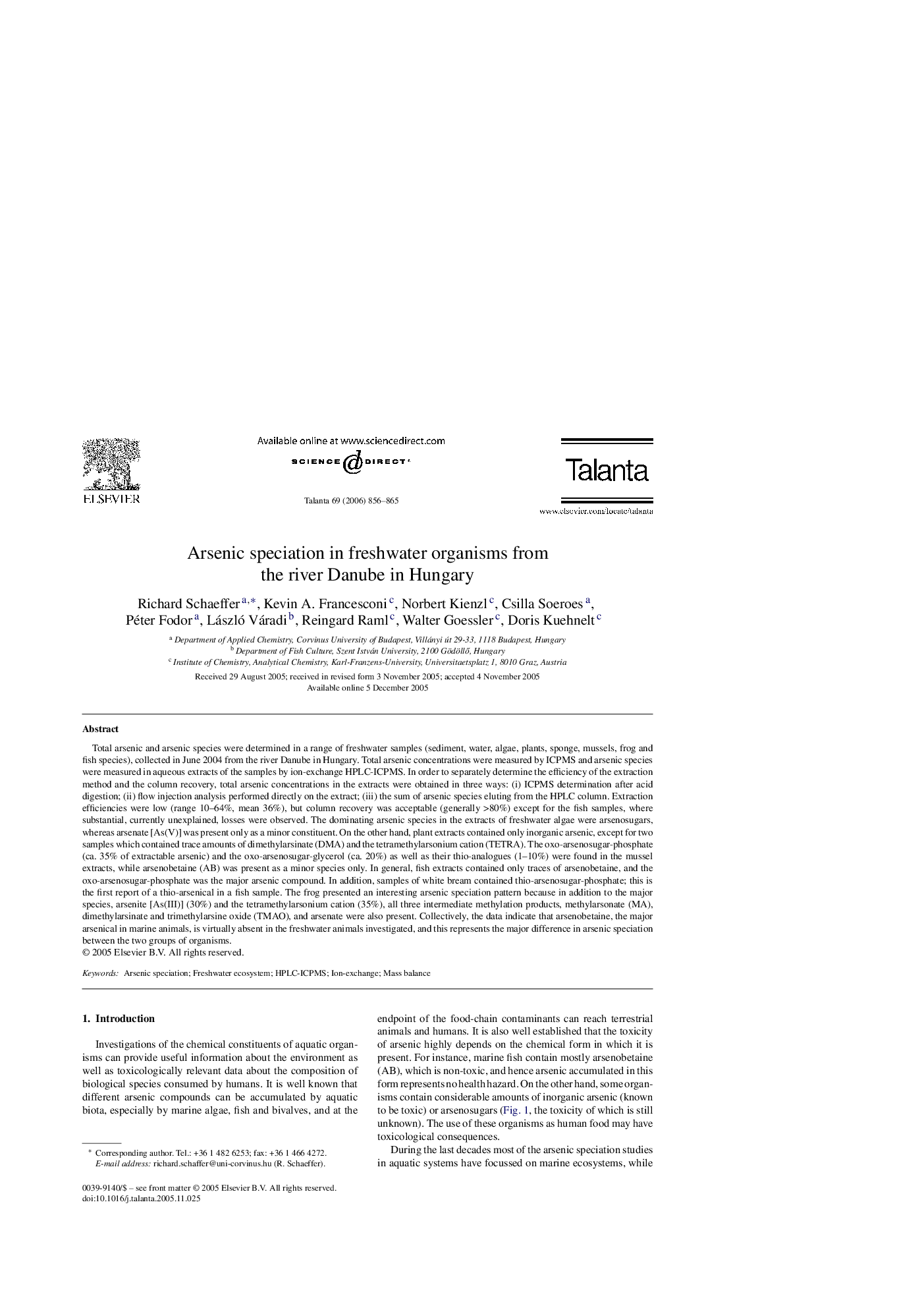| کد مقاله | کد نشریه | سال انتشار | مقاله انگلیسی | نسخه تمام متن |
|---|---|---|---|---|
| 1246250 | 969750 | 2006 | 10 صفحه PDF | دانلود رایگان |

Total arsenic and arsenic species were determined in a range of freshwater samples (sediment, water, algae, plants, sponge, mussels, frog and fish species), collected in June 2004 from the river Danube in Hungary. Total arsenic concentrations were measured by ICPMS and arsenic species were measured in aqueous extracts of the samples by ion-exchange HPLC-ICPMS. In order to separately determine the efficiency of the extraction method and the column recovery, total arsenic concentrations in the extracts were obtained in three ways: (i) ICPMS determination after acid digestion; (ii) flow injection analysis performed directly on the extract; (iii) the sum of arsenic species eluting from the HPLC column. Extraction efficiencies were low (range 10–64%, mean 36%), but column recovery was acceptable (generally >80%) except for the fish samples, where substantial, currently unexplained, losses were observed. The dominating arsenic species in the extracts of freshwater algae were arsenosugars, whereas arsenate [As(V)] was present only as a minor constituent. On the other hand, plant extracts contained only inorganic arsenic, except for two samples which contained trace amounts of dimethylarsinate (DMA) and the tetramethylarsonium cation (TETRA). The oxo-arsenosugar-phosphate (ca. 35% of extractable arsenic) and the oxo-arsenosugar-glycerol (ca. 20%) as well as their thio-analogues (1–10%) were found in the mussel extracts, while arsenobetaine (AB) was present as a minor species only. In general, fish extracts contained only traces of arsenobetaine, and the oxo-arsenosugar-phosphate was the major arsenic compound. In addition, samples of white bream contained thio-arsenosugar-phosphate; this is the first report of a thio-arsenical in a fish sample. The frog presented an interesting arsenic speciation pattern because in addition to the major species, arsenite [As(III)] (30%) and the tetramethylarsonium cation (35%), all three intermediate methylation products, methylarsonate (MA), dimethylarsinate and trimethylarsine oxide (TMAO), and arsenate were also present. Collectively, the data indicate that arsenobetaine, the major arsenical in marine animals, is virtually absent in the freshwater animals investigated, and this represents the major difference in arsenic speciation between the two groups of organisms.
Journal: Talanta - Volume 69, Issue 4, 15 June 2006, Pages 856–865